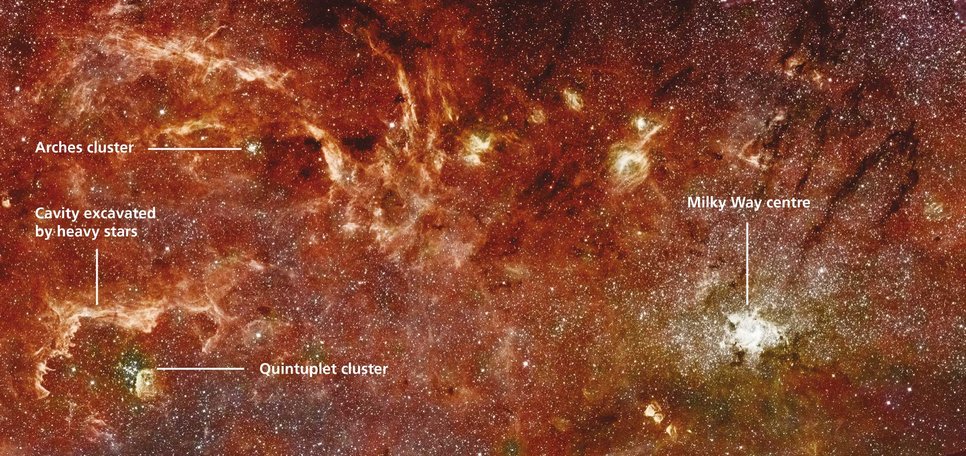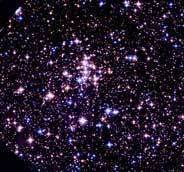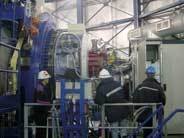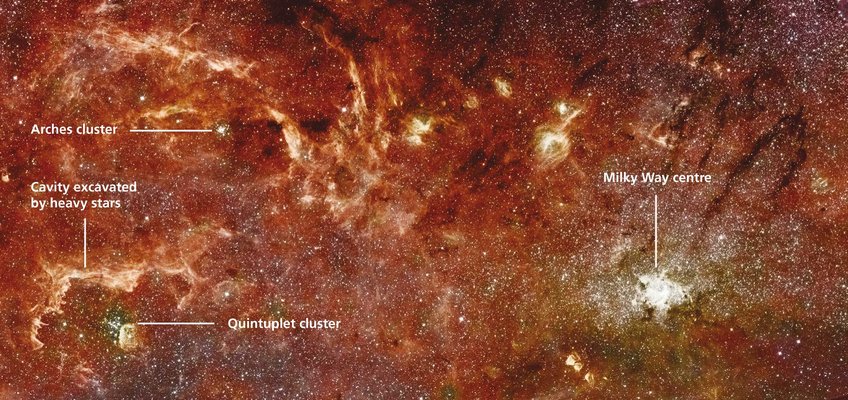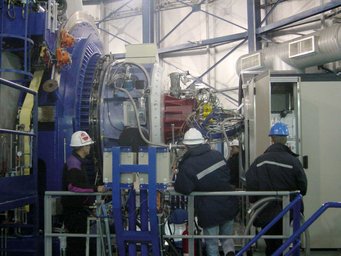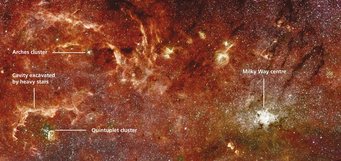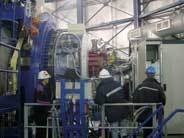Dust Disks Survive Cosmic Firework Near Young Massive Stars
Astronomers have discovered dust disks around stars in stellar clusters that recently formed near the center of the Milky Way. Because these young clusters contain very hot stars that generate energetic, intense Ultraviolet radiation, such dust disks, the sites of planet formation around young stars, were previously thought to be rapidly destroyed. The discovery that these disks can survive such hot environments much longer holds new information on when and how planets may have formed, especially billions of years ago when galaxies formed stars at a much higher rate than today and similarly extreme conditions were far more prevalent than in today’s universe.
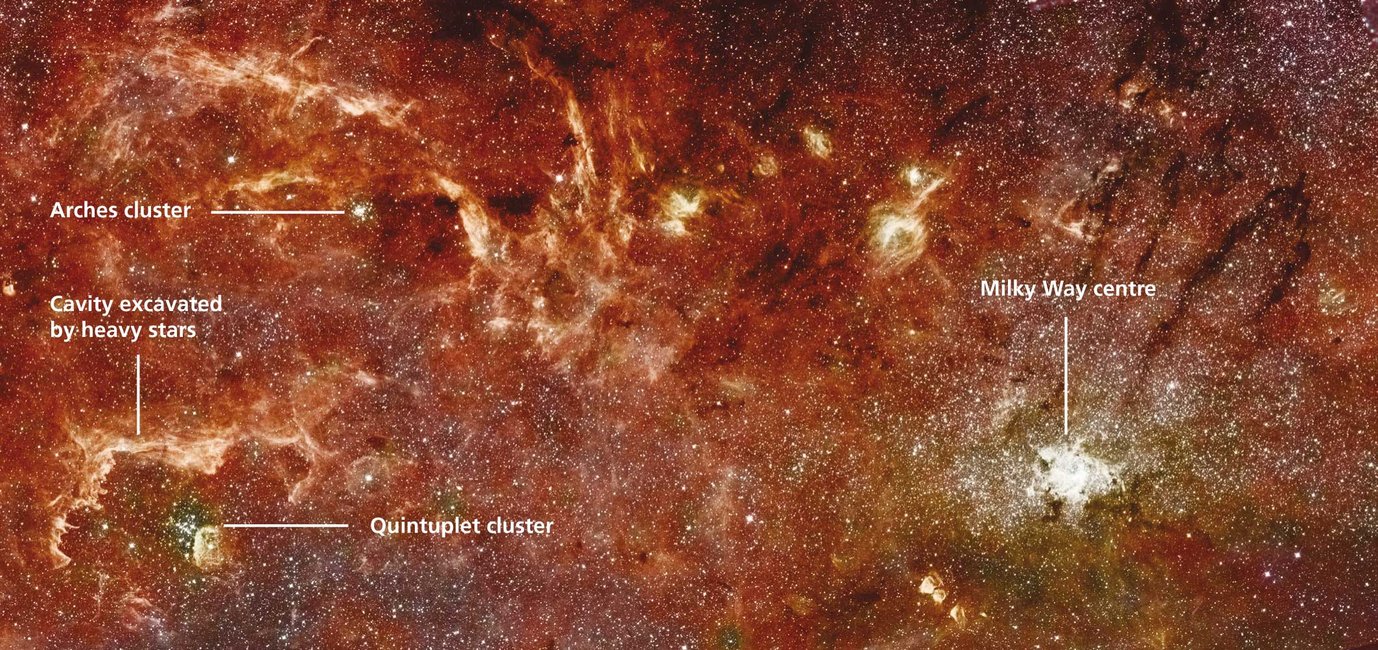
| Background Information | Images |
A study led by Andrea Stolte of the Argelander-Institute of the University of Bonn, Germany, and involving Wolfgang Brandner of the Max Planck Institute for Astronomy in Heidelberg, Germany, has observed young, bright stars in two star clusters, the Arches Cluster and Quintuplet Cluster. These clusters have formed only a few million years ago, near the center of the Milky Way where intense star birth takes place. They are among the youngest and most massive star clusters in our Galaxy, hosting tens of thousands of recently born stars.
“Our team had previously studied smaller young star clusters in more moderate environments, further outside in our Galaxy’s disk, within the spiral arms, where the UV radiation field is less intense”, Wolfgang Brandner explains. “We had found dust disks around stars in these clusters, and were interested whether such disks could survive the more extreme environments in the hot, dense star clusters near the Galactic Center. These clusters contain young very massive stars with temperatures around 50,000 degrees Celsius that generate intense, energetic UV radiation. The dust disks around the stars we studied are subject to that hard UV radiation. According to current understanding, the disks should have been evaporated under these conditions within few 100,000 years. The stars in the Quintuplet and Arches Clusters have ages much larger than that, 2.5 and 4 Million years respectively, and yet we discovered more than 20 dust disks around bright stars in each cluster.”
Dust and gas disks around young stars are of special interest as they are the sites where planets and solar systems are formed; our solar system was built from such a disk around the young sun, approximately 4.5 billion years ago. Whether the disks that were now discovered will eventually host planet formation is not clear yet: Brandner remarks that it is hard to tell from the present data whether they contain enough mass. “We can only see the warm dust in these disks, at moderate distances from the stars, and we can in particular not directly see the gas that must also be there. We do not think that they will host Jupiter-sized planets, but it might be possible for Earth-sized planets to form. It is also a possibility that these massive stars have nearby companion stars that could feed more mass into the disks.”
The fact that the results by Stolte’s team contradict the current theoretical concepts of disk survival makes them particularly interesting. The existence of the gas disks found means that these theories need to be reconsidered. This may well change our understanding of the history of planet formation from the early universe to today: Billions of years ago, galaxies formed stars at a much higher rate than today, and dense hot environments similar to the clusters near the center of the Milky Way existed over much larger regions within most galaxies. The study of the Arches and Quintuplet clusters therefore delivers clues to when and how planets were formed over the history of the cosmos.
To find these dust disks, the astronomers combined images from the European Southern Observatory’s Very Large Telescope in Chile and from the Earth-orbiting Hubble Space Telescope. The observations had to be performed in the Infrared light, at longer wavelengths than those visible to the human eye. Infrared cameras allow astronomers to look through the copious dust clouds near the center of the Milky Way that block much of the visible light. A key role in the present study played the Very Large Telescope’s “Adaptive Optics” camera system NAOS/CONICA that delivers very sharp images by compensating for the blurring effect of the Earth’s atmosphere; the Max Planck Institute for Astronomy had led the development of CONICA.
Wolfgang Brandner explains that the Infrared images his group obtained allowed them to look for a tell-tale signature in the light of the stars that is only present once a star is surrounded by a dust disk.
Background information
The results described here have been published as A. Stolte et al., "Circumstellar discs in Galactic centre clusters: Disc-bearing B-type stars in the Quintuplet and Arches clusters” in Astronomy & Astrophysics. DOI: 10.1051/0004-6361/201424132
Press release by the University of Bonn
Images
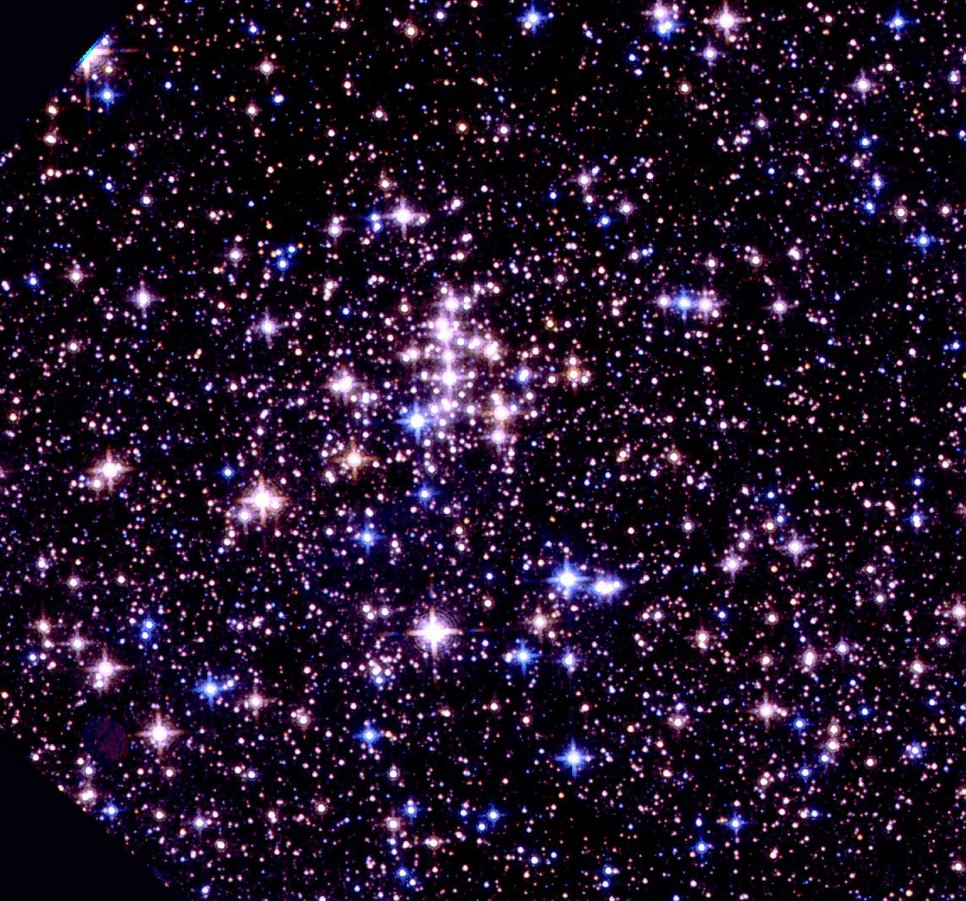
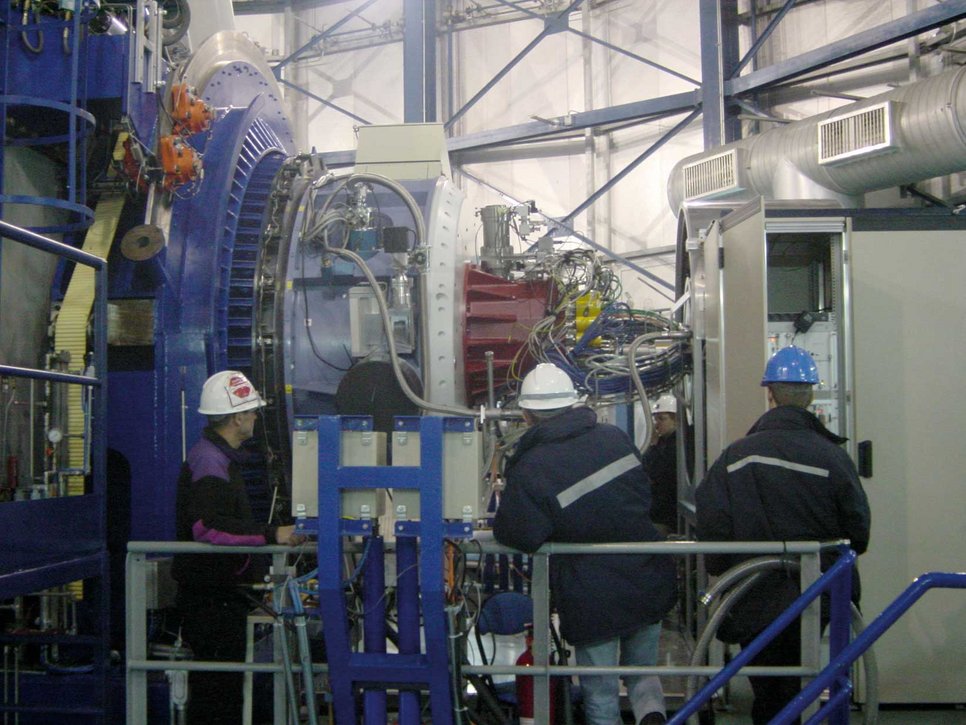
Download area
